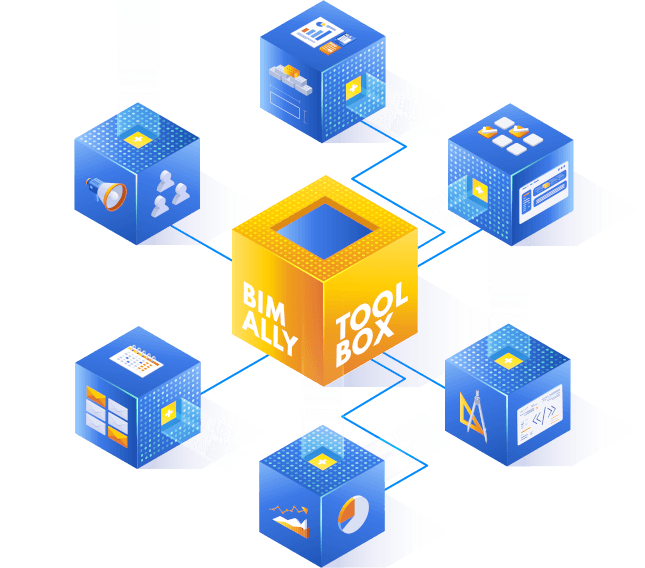Challenges related to the maintenance and administration of BIM libraries

BIM models are digital representations of real products, equipment or building materials used by architects when designing buildings.
A specific model is created by combining the 3D model with metadata about the product. The manufacturer, representing its products in the form of BIM models, makes them available not only in a visual form, but also with related data such as material, model number, assembly manual, energy consumption, carbon footprint, etc. In addition, high-quality models with full documentation are themselves sales product, increasing the visibility and the range of the company.
The ease and availability with which they can be used in a project gives a good chance of using them at the construction stage and thus generating new orders. Increasing numbers of manufacturers are choosing to prepare BIM models of their products, regardless of whether they are construction, finishing or installation materials. BIM is the future of design, which is slowly becoming a standard, and manufacturers themselves are already seeing a number of benefits from using this technology in their companies.
That is why it’s worth investing in building the company’s competences in this direction today. BIM is not only a 3D model with data, it is also a support for the building designer in the process of his work, it is a simple choice of materials during design, and above all, meeting the needs of the modern construction industry market. Investors are more often looking for companies that carry out projects in BIM technology, and we are slowly heading towards the reality in which, for public investments, the architect and contractor will be required to provide a project in BIM technology. Design offices wanting to work effectively look for ready-made BIM libraries, governments support the development of technology by announcing tenders for public procurement made in this technology.
From the manufacturer point of view, BIM technology is both an opportunity and a challenge.
On the one hand, BIM enables the manufacturer to build a marketing and technological advantage over the competition, on the other hand, it is very important to make the best decisions regarding the supplier and strategic partner of BIM from the very beginning. Imagine a situation in which you hear about BIM more and more often, decide to implement this technology in your company, but you choose the price as the main factor of supplier selection. Perhaps you will be lucky and will immediately find a company that provides BIM models of the right quality. What if it doesn’t? Can you see how you would verify this? I hope that after reading the above reading, you already understand, at least a little, the challenges facing you .

Below are the key points that you should pay attention to:
- A BIM library is not a CAD, under no circumstances should you allow the contractor to import CAD, STP, etc. models into the BIM library, this will put a heavy burden on the project, and the architect will quickly give up on your libraries.
- Choose the standard in which you want to offer libraries, one is enough, but stick to it successively.
- If you have already chosen the standard, make sure that the libraries make full use of the dedicated list of shared parameters, it will make it easier for designers to work, building lists.
- Remember to provide libraries for all the latest versions of BIM software
- Make sure that the supplier prepares parametric and not static libraries. It is one of the key elements of your success. Imagine a situation in which you order 1000 product codes, as part of the contract, the contractor provides you with 1000 models. After some time, it turns out that they need to be updated, some product codes have been withdrawn, others have been slightly changed. Rebuilding 1000 models will be a very costly process. When a parametric library is modified using a database in the form of a type directory it is a much more effective solution and can be used for PIM integration in the future.
- When building a BIM library, focus on the greater detail of “Level of Information” (LOI) than “Level of Development” (LOD), overloading the library with geometry will unnecessarily burden the project, a simplified form of geometry in line with the dimensions is often enough when key information distinguishing your product, may be decisive when choosing an offer.
- The method of publishing a BIM library can be as crucial as its preparation itself. There are two options, either you trust the platform that collects BIM libraries from many manufacturers and you will count on the architects to choose your offer, or you will take care of your own PR. The image of your company should be the most important, designers should view your offer directly at the source, being sure that the data published there is always up-to-date. It is also an increasingly chosen trend by companies that already have experience in the BIM world. The greatest ones know that they gain the most by building their image on their websites.
- Sales markets – if you offer your products in more than one market, it may be worth considering preparing a BIM library in several languages. You do not have to do it right away, but when choosing a service provider, it is definitely worth checking what additional cost you will incur.
- If you already have your solution for publishing BIM libraries, consider implementing automation. It is thanks to them that you will build your advantage among designers. Tools that make their work easier will win their favor. A construction project very often consists of repetitive but also necessary tasks. Automation implementation using your BIM library can decide about your advantage “Work Smart Not Hard”
- It often turns out that the theoretically cheapest offer may turn out to be the most expensive in the future. Because no one takes into account translations and parameterization of objects. Only that you cannot afford to publish outdated information. Your company is growing, along with your offer and the markets on which you sell. When choosing a BIM service provider, look for someone who is always able to support you.
- If you are in doubt and something is unclear, don’t be afraid to ask questions. There are more and more people working in BIM and most of them are enthusiasts of new solutions, they like to learn and share their knowledge.


BIM ALLY TOOLBOX will equip your company with tools and services, thanks to which you will be able to effectively manage cooperation with both current and newly acquired designers.